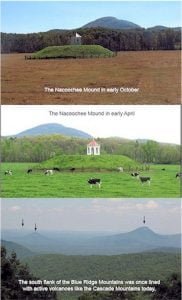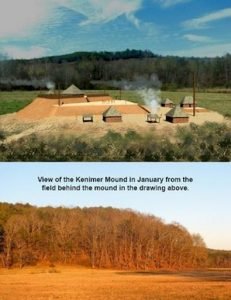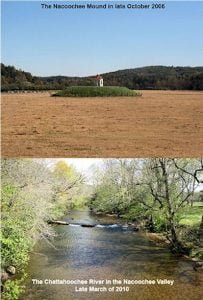Native American History of Campbell County, Georgia
Old Campbell County was located in west central Georgia. The county was named for Duncan G. Campbell, one of the state commissioners present at the signing of the Treaty of Indians Springs in 1825. In 1870 Douglass County was cut off from Campbell, but later renamed Douglas. The original county seat was Campbellton on the Chattahoochee River. However, shortly after the Atlanta & West Point Railroad was laid through the village of Fairburn, Fairburn became the county seat. Campbell was annexed by Fulton County in 1931. All of Fulton County is part of the Atlanta Standard Metropolitan Statistical Area (SMSA.) … Read more





